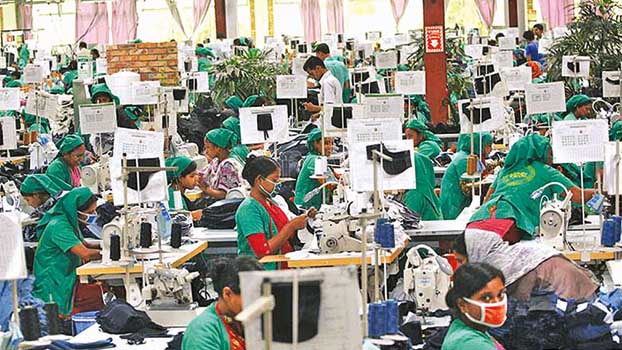
Bangladesh's garment industry, a major driver of the nation's economy, is looking beyond cotton and embracing a future of diversified fibers. This strategic shift is driven by a comprehensive study titled "Beyond Cotton" commissioned by the Bangladesh Garment Manufacturers and Exporters Association (BGMEA). The study highlighted the need for diversification in the country's garment exports. While cotton remains a major player, the global market is shifting towards non-cotton alternatives. Emphasizing the importance of the study, stating BGMEA President, Faruque Hassan says, "This report provides a roadmap for us to not only adapt to the evolving global market but to thrive in it... This report opens up new horizons for Bangladesh, and we are excited to embrace the opportunities it presents."
Cotton's dominance, diversification's potential
Historically, cotton has been the primary material for Bangladesh's garment exports, accounting for around 70 per cent in 2022-23. According to the Export Promotion Bureau (EPB) it is worth $55.56 billion in total garment exports in fiscal year 2022-23. However, the global market for non-cotton apparel is larger and is projected to grow faster than cotton. This includes synthetics, regenerated fibers, animal fibers, and other plant-based alternatives. By diversifying its export basket, Bangladesh can tap into this larger market and cater to changing consumer preferences.
Non-cotton apparel accounted for 54 per cent of the $505 billion global apparel market in 2021, according to the Economic Relations Department (ERD) of Bangladesh. The country, currently exports only 29 per cent of its garments in non-cotton materials. The industry is aiming to double this share to $19 billion by 2025. This presents a significant opportunity for growth and diversification.
China is the leading exporter of non-cotton garments, followed by India and Vietnam. Bangladesh, with its strong cotton garment industry, is still relatively new to the non-cotton market, but has the potential to become a major player with strategic development.
Benefits of going beyond cotton
Moving beyond cotton will help Bangladesh meet the evolving demands of global consumers. By offering a wider range of fiber options, Bangladesh can cater to changing consumer preferences and trends. Consumers are increasingly seeking versatile, affordable, and performance-driven clothing, which non-cotton fibers often provide.
Also, expanding into non-cotton segments can strengthen Bangladesh's position in the global apparel market, allowing it to compete more effectively with leading players like China, India, and Taiwan. It will help the country expand its export basket with non-cotton products and will allow Bangladesh to tap into a larger market and cater to a wider range of consumer preferences. Synthetics and other non-cotton fibers can sometimes offer higher profit margins compared to cotton, especially as cotton prices fluctuate. Adding non-cotton products to the export basket broadens the potential customer base, leading to increased market share and revenue.
Roadmap to success
The "Beyond Cotton" study outlines a roadmap for achieving successful diversification:
Developing a complete supply chain for non-cotton products: This involves investing in infrastructure, technology, and expertise to cater to the specific needs of non-cotton manufacturing.
Embracing innovation and versatility: Staying at the forefront of technological advancements and adapting to changing trends will be crucial for sustained success.
Collaboration between stakeholders: Industry leaders, policymakers, and manufacturers need to work together to create a supportive ecosystem for non-cotton production and export.
With diversification, the Bangladesh garment industry can secure its position in the global market, cater to evolving consumer preferences, and propel further growth. This strategic shift paves the way for a future that is innovative, versatile, and adaptable to the ever-changing demands of the fashion world.












